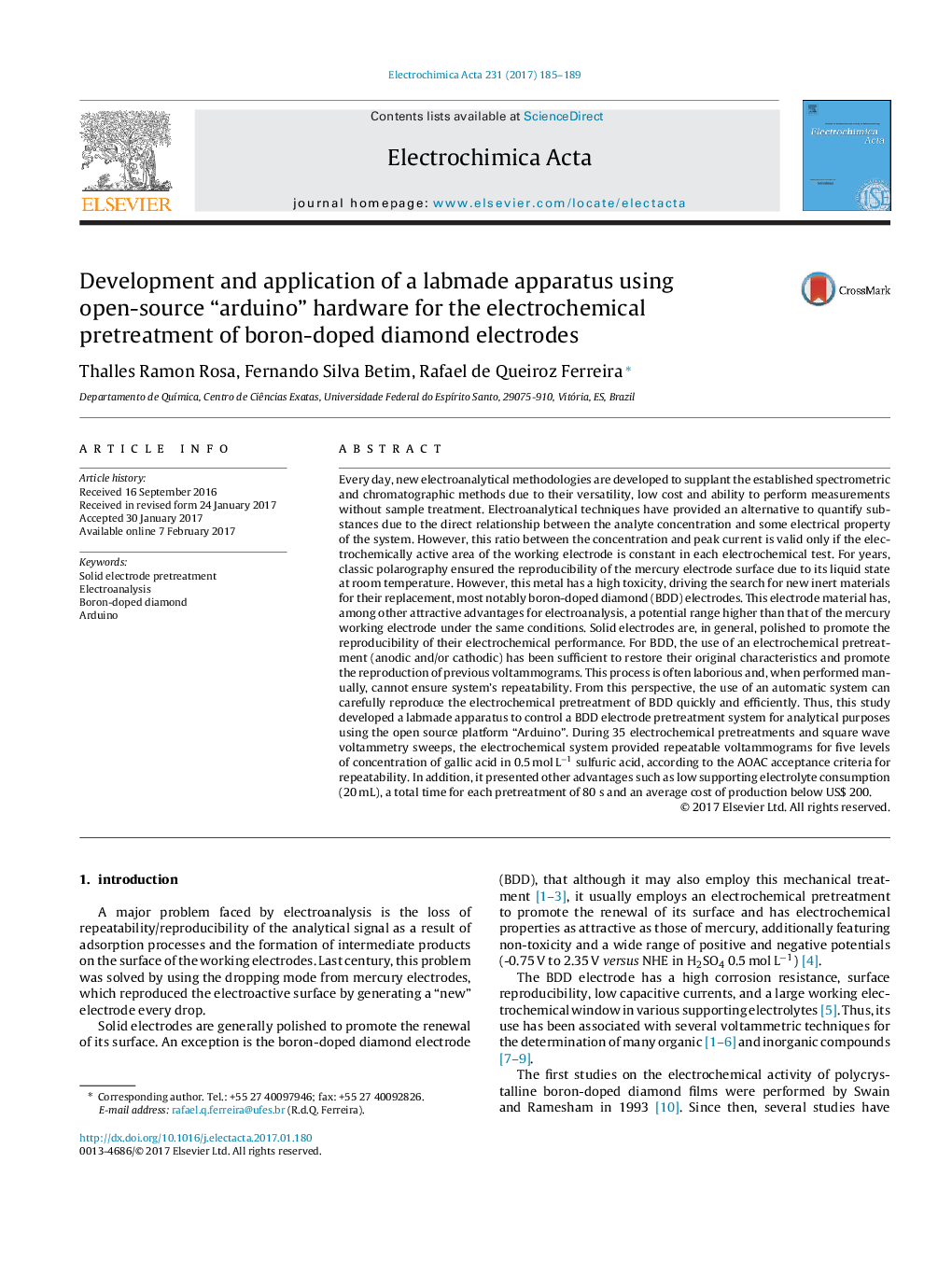| Article ID | Journal | Published Year | Pages | File Type |
|---|---|---|---|---|
| 6471971 | Electrochimica Acta | 2017 | 5 Pages |
â¢BDD electrodes use an electrochemical pretreatment (anodic and/or cathodic) to restore their original characteristics and promote the reproduction of previous voltammograms;â¢Automatic system can carefully reproduce the electrochemical pretreatment of BDD electrode quickly and efficiently;â¢Open source platform “Arduino” can be used to developed a labmade apparatus to control a BDD electrode pretreatment system for analytical purposes;â¢The main advantages of this labmade apparatus are: low supporting electrolyte consumption (20 mL), a total time for each pretreatment of 80 seconds and an average cost of production below US$ 200.
Every day, new electroanalytical methodologies are developed to supplant the established spectrometric and chromatographic methods due to their versatility, low cost and ability to perform measurements without sample treatment. Electroanalytical techniques have provided an alternative to quantify substances due to the direct relationship between the analyte concentration and some electrical property of the system. However, this ratio between the concentration and peak current is valid only if the electrochemically active area of the working electrode is constant in each electrochemical test. For years, classic polarography ensured the reproducibility of the mercury electrode surface due to its liquid state at room temperature. However, this metal has a high toxicity, driving the search for new inert materials for their replacement, most notably boron-doped diamond (BDD) electrodes. This electrode material has, among other attractive advantages for electroanalysis, a potential range higher than that of the mercury working electrode under the same conditions. Solid electrodes are, in general, polished to promote the reproducibility of their electrochemical performance. For BDD, the use of an electrochemical pretreatment (anodic and/or cathodic) has been sufficient to restore their original characteristics and promote the reproduction of previous voltammograms. This process is often laborious and, when performed manually, cannot ensure system's repeatability. From this perspective, the use of an automatic system can carefully reproduce the electrochemical pretreatment of BDD quickly and efficiently. Thus, this study developed a labmade apparatus to control a BDD electrode pretreatment system for analytical purposes using the open source platform “Arduino”. During 35 electrochemical pretreatments and square wave voltammetry sweeps, the electrochemical system provided repeatable voltammograms for five levels of concentration of gallic acid in 0.5 mol Lâ1 sulfuric acid, according to the AOAC acceptance criteria for repeatability. In addition, it presented other advantages such as low supporting electrolyte consumption (20 mL), a total time for each pretreatment of 80 s and an average cost of production below US$ 200.
Graphical abstractDownload high-res image (99KB)Download full-size image
